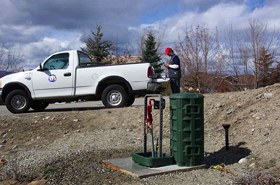Chlorine Residual
Chlorine residual refers to all municipal systems and semi-public systems applying disinfection, a disinfection residual should be maintained throughout the distribution system at all times. Maintenance and monitoring of a chlorine residual offers two benefits. First, a trace of chlorine will suppress the growth of organisms within the system and may afford some protection against contamination from without; second, the disappearance of the residual provides an immediate indication of the entry of oxidizable matter into the system or of a malfunction of the treatment process. It is therefore recommended that a free chlorine residual be maintained and monitored daily throughout the entire system. It is recognized, however, that excessive levels of free chlorine may result in taste and odour problems. In these cases, the control agency may provide guidance as to the type and concentration of chlorine residual to ensure a microbiologically safe water.

When a residual concentration measured at a sampling point is less than that required by the control agency, another sample should be taken immediately. If this sample is also unsatisfactory, the line should be flushed and sampling continued until a satisfactory concentration is obtained. If the residual does not return to the allowable minimum, the chlorine dosage should be increased. If increasing the chlorine dosage is ineffective, or if excessive chlorination is required, a sanitary survey for potential sources of contamination should be made in co-operation with the responsible control agency, and special sample of bacteriological analysis should be taken. Should all these measures prove inadequate, the control agency should be consulted for further advice, and action should be taken as appropriate.


